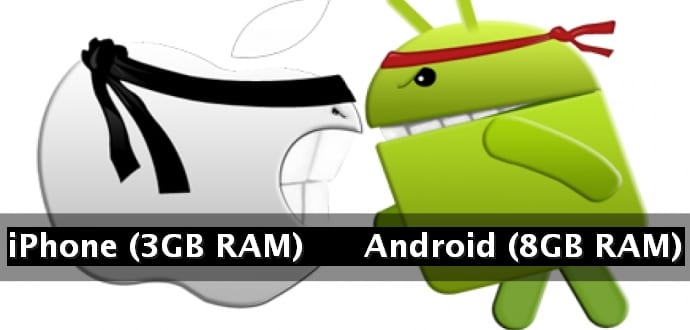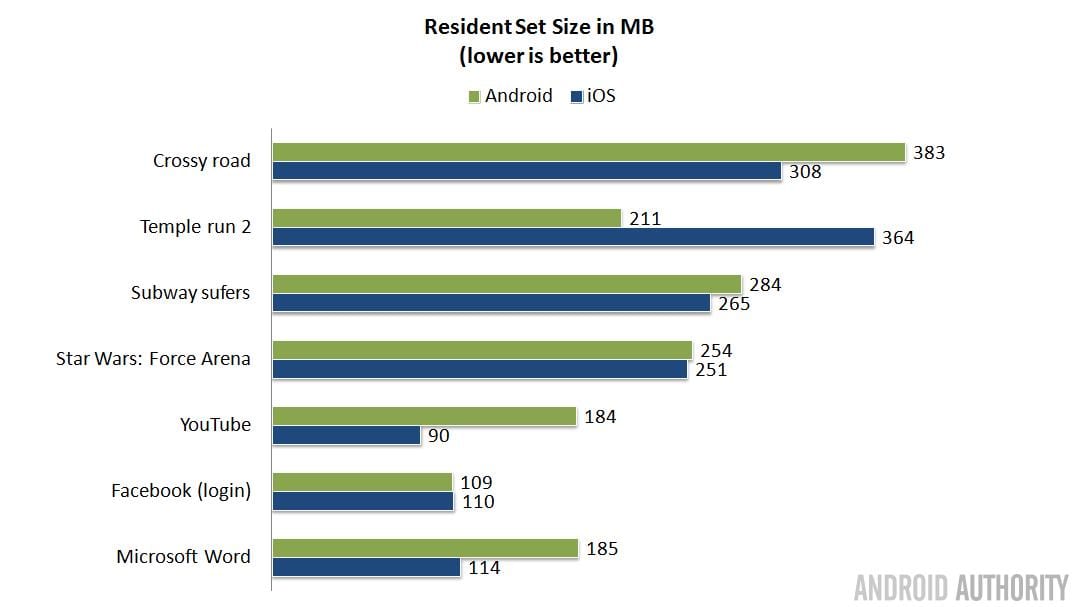Why does the iPhone need so much less RAM than Android devices?
As a result, most people conclude that iPhone needs less RAM or that Android apps hog storage space.
But does Android really use more RAM than iOS ?

RAM
The first thing we need to establish here, is that we are not talking about storage space.
Internal storage space of devices is many a times clubbed together with RAM storage when the specifications are listed.
Below is a comparison between the flagship devices of companies over the past few years.

This view will be reflected as the most popular opinion on the internet.
But the more deeper you look into the problem, the more this opinion starts sounding like a myth.
Before we share the results, let us share the thinking behind the results.

When an app needs to perform a function such as loading an image, it will request for memory.
Say the app asks for 1 MB of memory to load the image.
In each case the app was actually being used.
Below are the results:
As you could see, it is a bit of a mixed bag.
The Crossy Road app on Android uses 383MB of memory, while on iOS it uses 308MB.
But conversely Temple Run 2 uses 211MB on Android and 364MB on iOS.
Overall the trend is that Android apps use slightly more memory, around 6% more than iOS apps.
However iOS apps arent half the size of Android apps.
Its fair to say therefore, that the claim of Android apps being a memory hog doesnt hold water.
The actual reason cause therefore, is something else entirely.
Background and Foreground
The difference in the storage needs stems from the way the two OSes control background processes.
Each of them follows a different approach and hence produce different results.
If you own an iPhone, open Safari and hit a URL.
You will notice that the page load has been paused while the screen is being rendered.
Android however, approaches background apps with a different methodology.
Android keeps all apps alive on the RAM if there is sufficient RAM to support it.
For Android, empty RAM is wasted RAM.
This reduces battery usage as the apps are only initialized once and then remain alive on the RAM.
Unless these apps have a background process, they do not use any battery while being kept alive.
This difference in approach makes a lot of difference.
Source:Quora
Read More
source: www.techworm.net